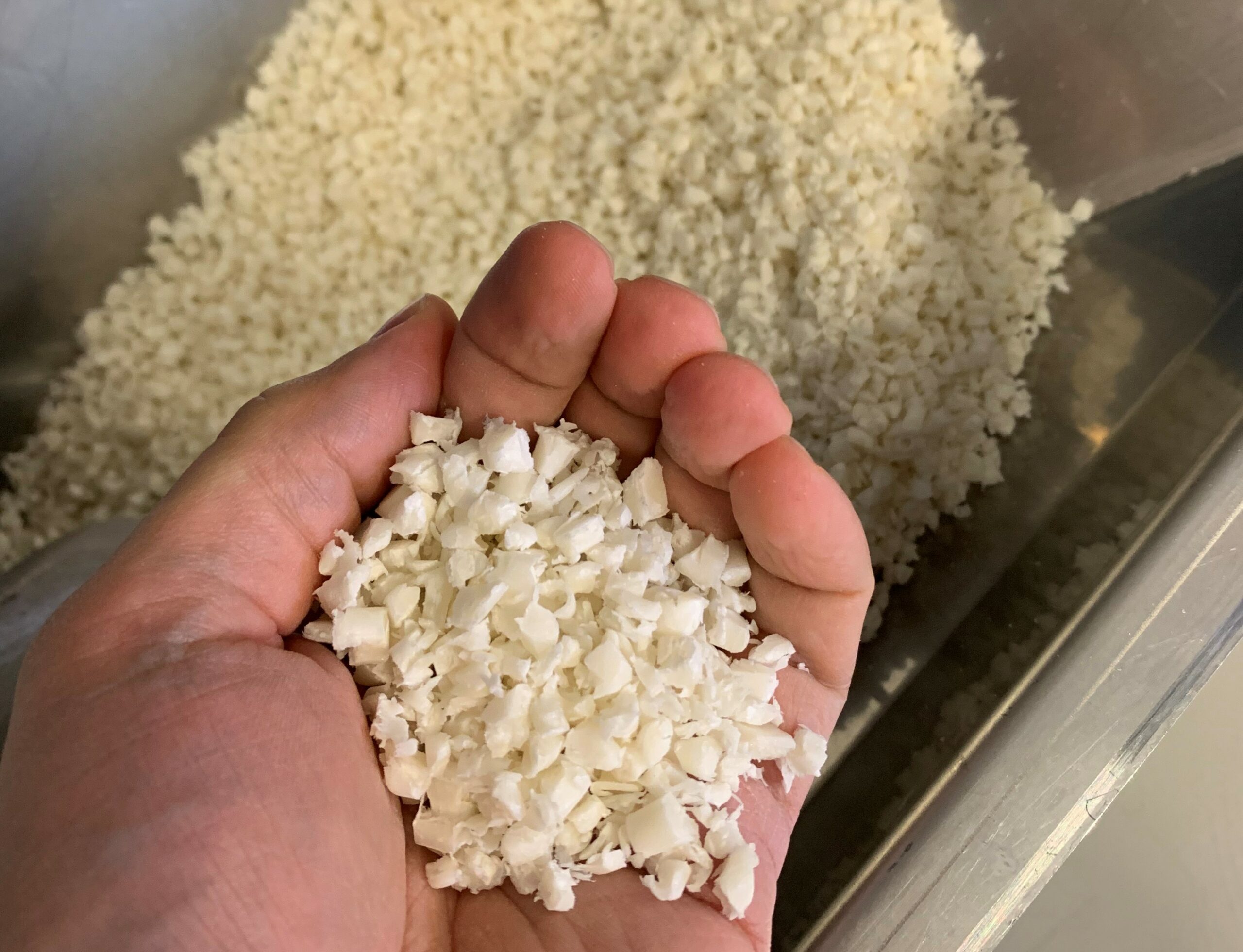The current status of plastics recycling is discussed, as well as how bio-based and recycled plastic materials complement each other in the fight against climate change.
Highlights
- Currently, only a small fraction of all plastics is recycled – and very rarely into equally demanding applications such as food packaging.
- Bio-based or recycled materials reduce the dependency on fossil oil, if they are used to substitute virgin fossil oil-based materials.
- Bio-based plastics like PLA bind carbon from the atmosphere. Recycling prolongs the lifetime of these carbon sinks, and it is already technically feasible.
Current situation in plastics recycling
Mechanical recycling is a simple and energy-efficient method where the recyclates are melted and pelletized. At the moment, most recycled plastics are mechanically recycled [1]. Unfortunately, these materials often suffer from inconsistent quality, lower properties compared to virgin materials, and lack of food-contact approval. Due to these reasons, mechanically recycled plastics can be used in a limited number of applications such as watering pots, spray bottles and cleaning equipment. A recent Finnish reportage found out that only 37% of all collected plastic waste is actually recycled due to a low demand of recycled material (the rest is incinerated). The recycling rates vary between 21 and 42% in France, Germany, UK, Spain and Italy – but this includes the exports for recycling in other countries [1]. In some cases, the actual end-of-life for exported plastic waste has been far from recycling.
A lot of effort has been recently put into the recyclability of plastic products. This progress is important, but the real bottleneck seems to be finding applications for recycled plastics. There is little benefit in recyclability, unless it actually reduces the use of virgin fossil oil-based materials. This is noticed in California as well, where the state wants to restrict the use of the recycling symbol in materials whose actual recycling rate is less than 75%.
Chemical recycling constitutes a number of promising methods that can break polymers down into monomers, which can be used to produce new polymers. This makes them more energy-intensive compared to mechanical recycling. On the other hand, chemical recycling technologies are typically less sensitive to mixed and contaminated plastics, and the resulting polymers perform similarly when compared to virgin materials. However, as chemical recycling technologies are only taking their first steps towards widespread use, their technical, economic and ecological aspects require more scrutiny [1,2].
Bio-based materials and their recycling
Bio-based plastics are partly or fully made from renewable feedstock like plants. In addition, new materials are developed from organic waste, industrial side streams and residues, or even CO2. Common to all these materials is that they bind carbon from the atmosphere. This is contrary to fossil oil-based materials whose carbon originates from the geosphere and is added into the atmosphere at the end-of-life. As discussed in our earlier blog post, only about 1% of all plastics were produced from bio-based feedstock in 2020. However, an ever-increasing number of companies have started to lead the transition towards bio-based plastics. This needs to be addressed in the recycling and waste management systems as well.
Some bio-based plastics like bio-PE or bio-PP are chemically identical compared to their fossil-derived counterparts and thus do not require special attention in waste management. PLA on the other hand is a common bio-based polymer, whose volumes are not yet sufficient for setting up separate PLA recycling streams. For this reason, it is often denounced as “non-recyclable” or even harmful to existing recycling streams, but these claims are typically not supported by data. Instead, a study performed at the Technical University of Chemnitz (Germany) suggested that up to 3 wt-% of PLA was harmless on injection moulded PP recyclates [3] and could thus be diverted into the PP stream. Volumes larger than this could already enable an economically feasible dedicated PLA stream. In addition, many PLA-based products can also be organically recycled in composting facilities, but at the moment this is dependent on the local instructions and composting infrastructure.
ArcBiox materials are bio-based and can be recycled
The ArcBiox materials are bio-based and thus bind carbon from the atmosphere, which offers environmental benefits even in incineration [4]. Most ArcBiox materials enable closing the carbon loop via organic recycling (composting), but Arctic Biomaterials is getting ready for a future where materials are increasingly reused and recycled, thus storing the carbon in the products even longer.
Esa Hallinen, R&D project manager explains:
Currently, only a fraction of all plastics is actually recycled. ArcBiox materials provide environmental benefits compared to fossil-derived plastics even in incineration, which is a common end-of-life option in Europe at the moment. But we are getting ready for a truly circular future, where an increasing amount of bio-based plastics is used and also recycled.
Arctic Biomaterials has performed extensive pre-consumer mechanical recycling tests with their materials. All of the ArcBiox products allow grinding the production sprues and feeding them back into the system. Most of these products show no differences in their mechanical properties even after multiple grinding and re-injection moulding (or re-compounding) steps using 100% recycled content. These results give our customers a solid ground to avoid production scrap and to plan take-back programs, where consumers can return used products to the manufacturer.
Most ArcBiox materials are also compostable, which offers the alternative for organic recycling wherever a suitable composting infrastructure is at place. This includes high-strength composites that are reinforced with our degradable glass fibers. It is a clear advantage compared to many conventional hard-to-recycle composites.

References
[1] Vollmer et al. 2020, Beyond Mechanical Recycling: Giving New Life to Plastic Waste. Angewandte Chemie Int. Ed., 59, 2–24.[2] Solis and Silveira 2020. Technologies for chemical recycling of household plastics – A technical
review and TRL assessment. Waste Management, 105, 128-138.
[3] FNR-Project „Nachhaltige Verwertungsstrategien für Produkte und Abfälle aus biobasierten Kunststoffen“ FKZ 22019212. Final report available (in German): https://www.fnr-server.de/ftp/pdf/berichte/22019212.pdf
[4] Life-cycle analysis data available: https://abmcomposite.com/technical-products-sustainability/




